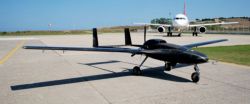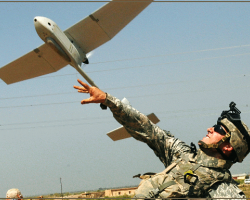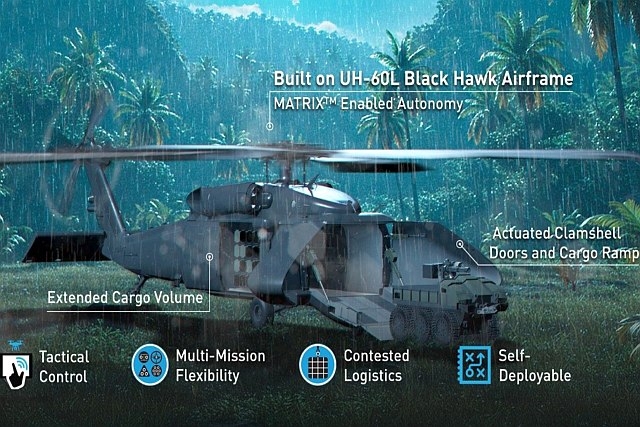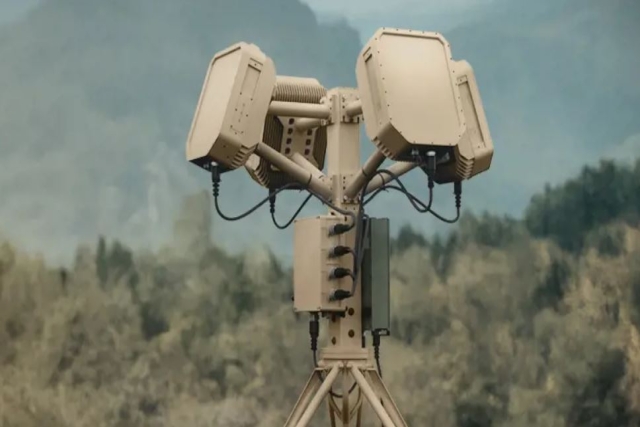Rockets, Laser Guided Missiles For Asia- Pac Bound US Drones
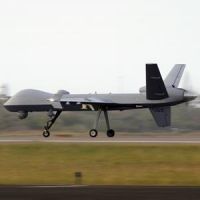
The Pentagon is preparing to deploy lightweight, precision-guided weapons to the Asia-Pacific region as its armed forces begin to pull out of Afghanistan.
The Department of Defense is reportedly preparing to counter new threats that are emerging from the region and plans to employ multiple weapons for drones.
Plans also include renovating and reclamation of Cold War-era Hydra 70 rocket and the Laser Homing Attack or Anti-Tank Missile, or LAHAT.
Over the next four years, the Pentagon plans to spend almost $24 billion on unmanned air, ground and maritime systems. With over $1.3 billion expected to be spent research and development funding for drones from fiscal 2013 to fiscal 2014 while overall spending on the technology is expected to total at least $4.1 billion in the fiscal year that began Oct. 1.
“Unmanned systems can be used in significantly different operating and threat conditions than manned platforms, come in a much wider range of classes and sizes than manned systems, can exhibit greater persistence and endurance than manned systems, and have the potential to support a large range of mission sets,” according to recently released US DoD report called "Unmanned Systems Integrated Roadmap".
The DoD is working on finding ways to arms its 11,000 aerial drones with existing weapons.
As the department develops systems that can operate in contested areas such as the Asia-Pacific, it’s trying to find ways to arm many of its nearly 11,000 aerial drones with existing weapons.
The Hydra rocket system can be installed on most rotary and fixed-wing aircraft, such as the AH-64 Apache, AH-1Z Viper, AH-1 Cobra, OH-58 Kiowa, UH-60 Black Hawk, P-3 Orion, MH-6 Little Bird, A-10 Thunderbolt II, AV-8B Harrier II, UH-1 Iroquois, F-4 Phantom II, F-16 Fighting Falcon, F/A-18 Hornet, OV-10 Bronco, A-4 Skyhawk and A-6 Intruder.
In 2013, the US Army awarded General Dynamics Armament and Technical Products (GDATP) an order for the Hydra-70 rockets worth $224 million. Deliveries are expected to be complete in 2015.
As part of its Advanced Precision Weapon Kill System, unmanned helicopters will be armed with Hydra 70 rockets which will be designed to bridge the gap between Hellfire missiles and unguided Hydra rockets.
In 2013, the Navy began arming the MQ-8B Fire Scout helicopter drone with the system, which uses a launcher originally developed for the Army’s canceled Comanche attack helicopter, according to military.com.
While the Army and Marine Corps are also looking at ways to further incorporate the 2-pound kamikaze drone called Switchblade and developed by AeroVironment Inc. The system can be launched by hand and fly directly into a target.
“Adapting proven weapons technology with new concepts to take advantage of unmanned systems persistence and emerging net-centric capability, manned and unmanned teaming will be critical to improving the sensor-to-shooter equation and further decreasing in the kill chain timeline,” the report states.
